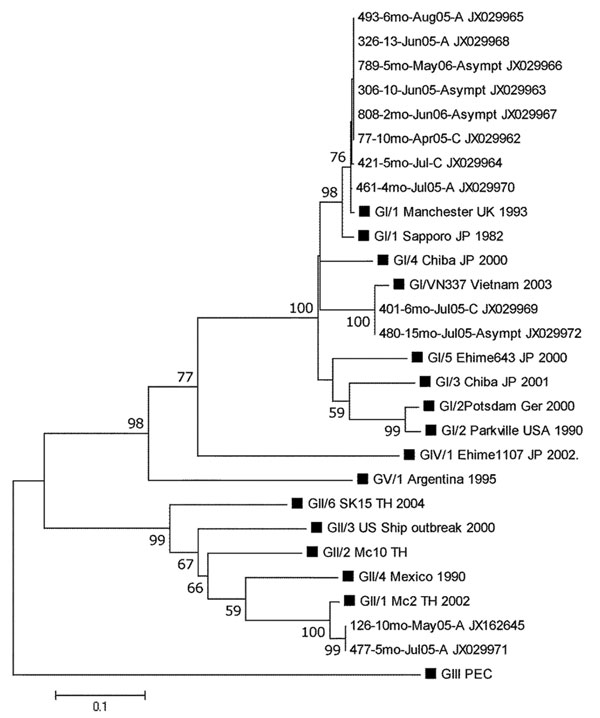Volume 18, Number 11—November 2012
Dispatch
Susceptibility of Children to Sapovirus Infections, Nicaragua, 2005–2006
Figure 2

Figure 2. . . . Phylogenetic analysis of the partial N terminal capsid gene (339 bp) of SaV strains identified in a pediatric population in Leon, Nicaragua, March 2005–September 2006. The tree was constructed on the basis of the Kimura 2-parameter and neighbor-joining methods with MEGA5 software (www.megasoftware.net). Bootstrap values are shown at the branch nodes (values <50% are not shown). The black squares represent SaV reference strains GI–GV. For Nicaraguan strains, the number of the strain is given, followed by age in months, month and year of sample collection, and clinical status. A, mild; C, severe; Asympt, asymptomatic. Scale bar indicates nucleotide substitutions per site.
1These authors contributed equally to this article.
Page created: October 15, 2012
Page updated: October 15, 2012
Page reviewed: October 15, 2012
The conclusions, findings, and opinions expressed by authors contributing to this journal do not necessarily reflect the official position of the U.S. Department of Health and Human Services, the Public Health Service, the Centers for Disease Control and Prevention, or the authors' affiliated institutions. Use of trade names is for identification only and does not imply endorsement by any of the groups named above.